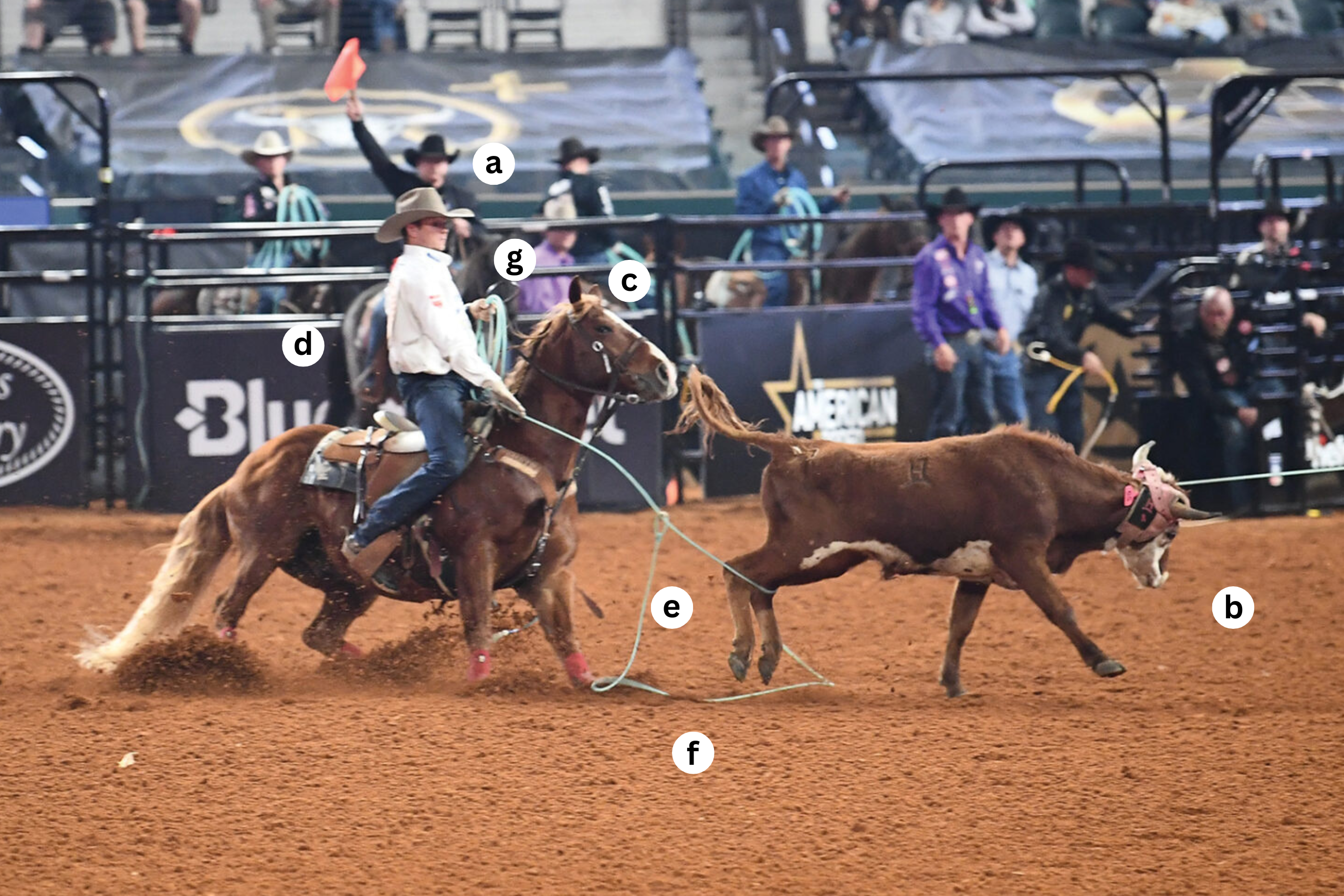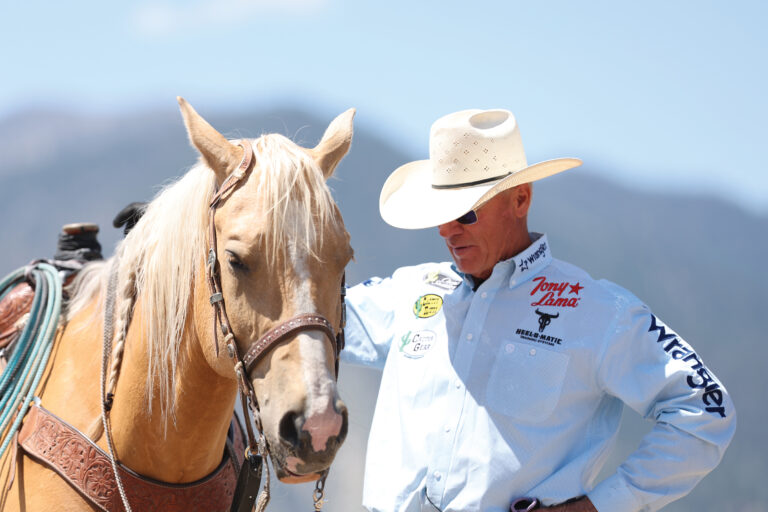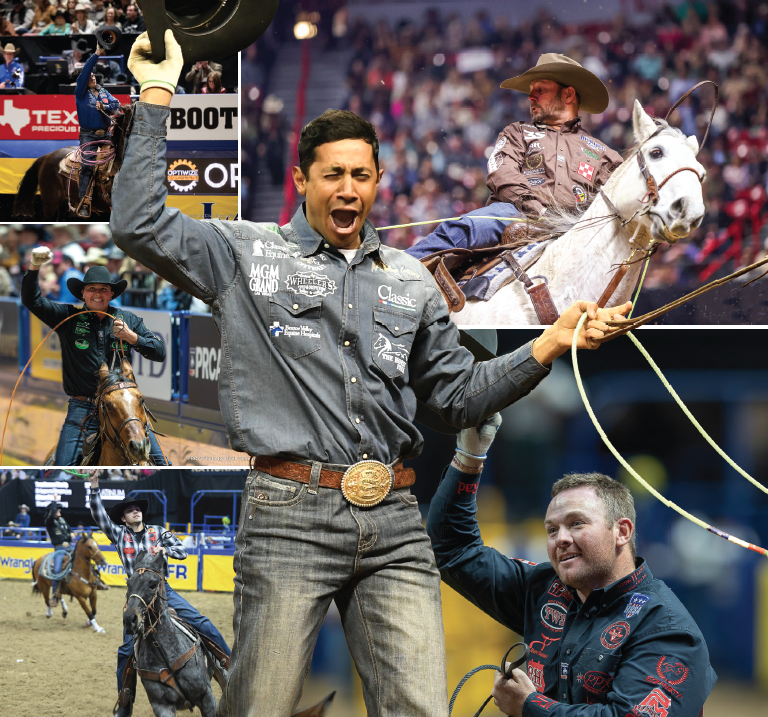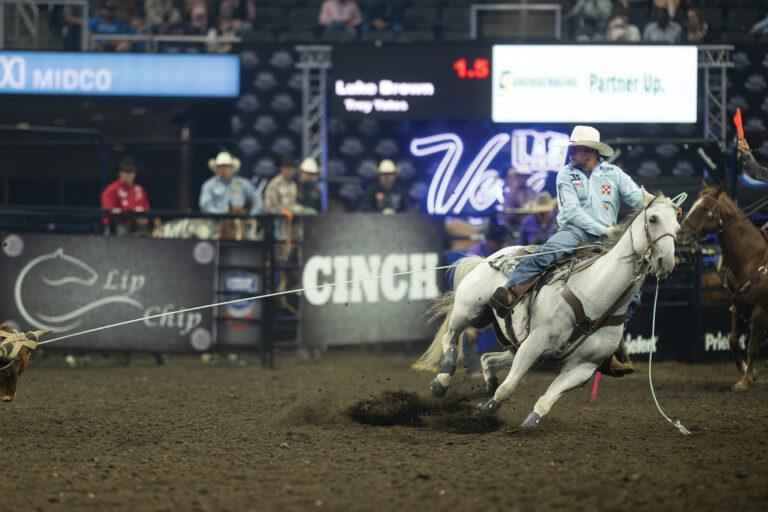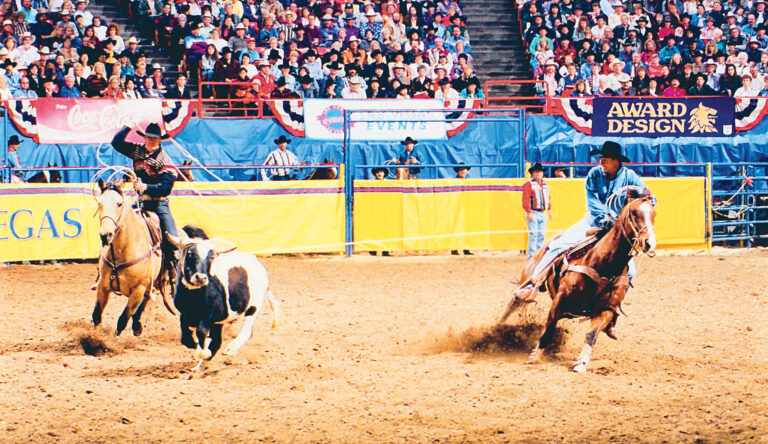
a) The mental game
We were first out, so we couldn’t really strategize too much. We knew the steer we had, and we liked him because he was supposed to be straight and pretty strong, so Luke could take a good start and it would give us a good throw. We just wanted to try to make the best run we could and then just see what happened. If nothing else, we were just thankful that we were going to get to place because we were in the four-man.
b) The steer
They took them all to Chad’s [Masters] two days before, and we roped through all of them and picked those final four steers, then the 10-man steers. The final four steers were the strongest steers on the herd. At Chad’s he wanted to go right, and he ran really hard, so we put him in the four-man because we didn’t want any steers to go left. He was pretty easy to remember—he was the only red brockle-faced in there, so when we saw we had him, we knew which one he was.
c) Casino
That horse is amazing in the short setups. He’s really good in the box, so you can get a really good start on him; he never moves around or anything, he stands there really still, and then when the gates go, he leaves off your hand kind of like a head horse, which makes him fun and easy in those setups. He gives me the same look every time. He runs as hard as he can down the arena, and then when the steer squares up, he just kind of turns his head to the left and basically just gets out of your way and opens the door for you to throw. That’s what he felt like on that run, and that’s kind of his signature move.
d) Position
I felt like I was in really good position, and I set it up exactly how I wanted. If the steer was going to round in the turn, I was in a spot where I could throw on the first jump, and if he squared, I could just take one swing when he jumped away. He kind of squared a little bit, and I just got one [swing] over his back kind of on the crossfire jump, and then I was in a good spot to throw the next jump. It felt like it was an easy shot.
e) Loop
I thought I got my top strand high up in the hocks, and then my bottom strand is below the feet, so I like that. I had a pretty good amount of loop through the steer’s feet, which gives me a good chance to not slip him or to not have anything weird happen to where I would miss him. I thought my loop was pretty good on that steer.
f) Timing
I try to set it up to where my rope is going down around the steer’s feet at the height of the jump, I call it. When the steer’s jumping in the air and his feet are as high in the air as they’re going to go, that’s when I want my rope to go down. The timing of that, then the finish of my horse separating and the steer leaving me all at the same time. It honestly probably came a little faster—the separation—than I thought because I kind of bobbled my dally a little bit, but it worked out good.
g) Left hand
Sometimes if the steer’s going to jump away from me really hard or fast, I will kind of keep my left hand down. That way I have room to send my rope farther or get more rope through the feet. But if the steer’s heavy or if he’s not leaving me, I’ll kind of pick my horse up with my left hand and keep my left hand higher. On that certain steer, he’s about to jump away from me, so I don’t feel like I had much contact with my left hand. It’s in a pretty good spot.
WATCH ON ROPING.COM: Green Horse Competition Prep with Hunter Koch
—TRJ—




